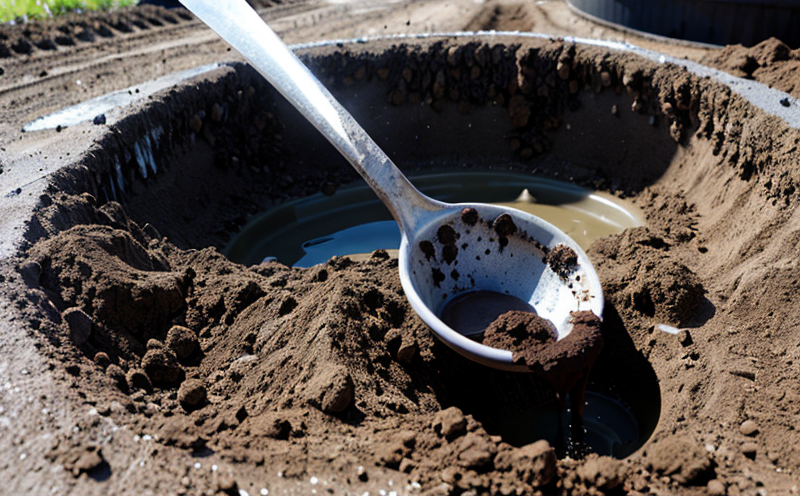ISO 5667-13 Sampling of Sludge and Biosolids Test
The ISO 5667-13 standard provides comprehensive guidance for the sampling of sludge and biosolids. This method is essential in ensuring that samples are representative, which is critical for accurate analysis and compliance with regulatory requirements.
Sludge and biosolids management is a complex process, involving various stages from treatment to disposal or utilization. Sampling plays a pivotal role in this process by providing reliable data on the composition of sludge and biosolids. This information is vital for optimizing processes, ensuring safety, and meeting regulatory standards.
The standard specifies detailed procedures for sampling different types of sludge and biosolids, including activated sludge from wastewater treatment plants, primary sludge, and digested or partially digested sludge. It also covers the handling and preparation of samples to ensure they are representative of the bulk material being analyzed.
Sampling must be conducted in a manner that minimizes disturbance, maintains the integrity of the sample, and ensures that the sample accurately represents the characteristics of the entire batch or lot of sludge or biosolids. This is crucial for subsequent analysis which may include chemical composition, biological activity, calorific value, and other parameters.
The ISO 5667-13 standard emphasizes the importance of using appropriate equipment and techniques to achieve accurate sampling. It provides guidance on the selection of sample points, the use of containers, and the handling procedures during transportation and storage of samples before analysis.
Compliance with this standard is crucial for facilities involved in wastewater treatment, biogas production, composting, and other applications where sludge or biosolids are a key component. By adhering to these guidelines, laboratories can ensure that their testing results are reliable and consistent, which is essential for maintaining operational efficiency and regulatory compliance.
Understanding the nuances of ISO 5667-13 is not just beneficial but necessary for professionals in this field. It ensures that samples are collected correctly, leading to accurate analysis and informed decision-making. This standard supports a wide range of stakeholders including wastewater treatment plant operators, environmental regulators, R&D engineers, and quality managers.
Applied Standards
| Standard | Description |
|---|---|
| ISO 5667-13:2018 | Sampling of sludge and biosolids - Part 13: Sampling procedures for sludge and biosolids to be used in the determination of chemical, physical and biological parameters. |
| ISO 15267-1:2014 | Sampling of slurries, suspensions and solids - Part 1: General principles for sampling slurries, suspensions and solid materials with special reference to the food industry. |
| ASTM D4295-18 | Standard Practice for Collection of Biological Samples from Sludge and Biosolids in Municipal Wastewater Treatment Plants. |
| EN 13672:2002 | Sampling of sludge and biosolids - Sampling procedures for the determination of chemical, physical and biological parameters. |
Benefits
Compliance with ISO 5667-13 ensures that sampling is representative, which leads to accurate analysis. This accuracy translates into better decision-making for process optimization and regulatory compliance.
For wastewater treatment plants, reliable sampling means more efficient operations. By understanding the composition of sludge and biosolids, plant operators can fine-tune processes like digestion, dewatering, and storage. This leads to improved performance and reduced operational costs.
From an environmental standpoint, accurate sampling helps in assessing the impact of wastewater treatment on water quality. It supports efforts to minimize pollution and promote sustainable practices.
R&D engineers can leverage reliable data from representative samples to innovate new technologies and processes. For instance, understanding the biological activity within sludge or biosolids can lead to advancements in biogas production or composting techniques.
Quality managers and compliance officers benefit greatly from this standard as it provides a robust framework for ensuring that all sampling activities are conducted correctly. This enhances the credibility of test results and supports regulatory compliance.
Customer Impact and Satisfaction
- Increased confidence in analytical results leading to better-informed decisions.
- Enhanced operational efficiency by optimizing processes based on accurate data.
- Reduction in the risk of non-compliance with environmental regulations.
- Better stakeholder relations due to transparent and reliable testing practices.
- Simplified compliance audits with clear, representative sample documentation.





